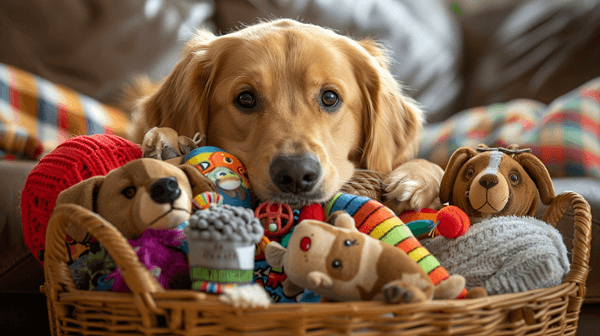
Choosing the right toy for your dog isn’t just about fun; it’s essential for their development and well-being. As your pet grows, their play needs change, making it crucial to select toys that match these stages. From a curious puppy experiencing the world for the first time to an adult dog seeking new forms of entertainment, the type of toy you choose can significantly influence their mental and physical health.
Toys provide more than just entertainment; they stimulate the mind, promote exercise, and help develop social skills. For instance, interactive toys can be key to keeping your dog mentally active, while chew toys are vital for dental health, especially in puppies.
In this article, we’ll explore the best toys for dogs according to their age and size, along with the benefits they offer. We’ll discuss how to choose the right toy for each stage of your dog’s life, tips for keeping their interest, and common mistakes to avoid. Through specific recommendations, scientifically backed data, and practical advice, we’ll help you ensure that your furry friend has the best toys to enjoy at every stage of their life.
Main Benefits or Reasons
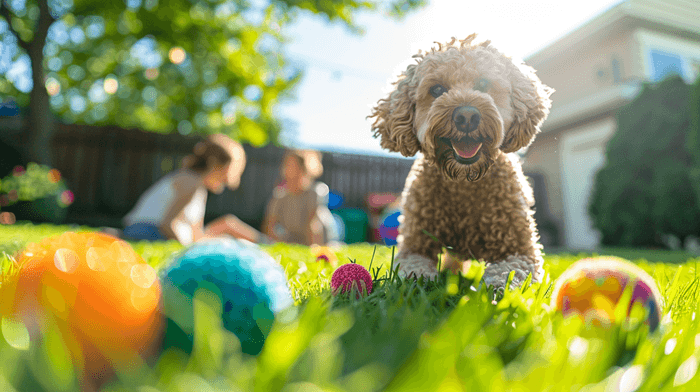
1. Mental and Physical Stimulation: Dogs are intelligent animals that require both mental and physical activity to stay happy and healthy. Lack of stimulation can lead to destructive behaviors or anxiety. Interactive toys, such as puzzles or treat dispensers, stimulate your dog’s mind and teach them to solve problems. This is particularly important for young dogs that are learning about the world around them.
Additionally, physical toys encourage exercise, which is essential for preventing obesity and related health issues. Regular playtime helps keep your dog fit, as physical activity improves cardiovascular health, muscle strength, and flexibility.
2. Development of Social Skills: Toys for dogs are also key tools in helping dogs develop social skills. Playing with other dogs or humans teaches them about boundaries, body language, and appropriate interactions. Shared play toys, such as balls or frisbees, encourage interaction and play among dogs, which is especially important during socialization stages. Through play, dogs learn to read signals from others, which can be crucial for their emotional development.
3. Prevention of Stress and Anxiety: Dogs can experience stress and anxiety, especially in new or loud situations. Chew toys, like rubber bones or textured toys, can provide a healthy outlet for releasing that tension. Chewing not only distracts your dog but also helps release endorphins, hormones that generate feelings of happiness and well-being.
In situations like thunderstorms or fireworks, toys for dogs can act as a form of distraction therapy. Providing a toy that your dog enjoys can help calm their anxiety and make them feel more secure.
4. Aiding in Teething: Teething in puppies can be a painful process, and it’s essential to provide appropriate chew toys to alleviate that discomfort. Soft rubber or gel toys are ideal during this stage, as they offer a pleasant texture that feels comforting. Additionally, chewing toys not only help relieve gum pain but also promote dental health by assisting in cleaning their teeth and gums.
As puppies mature, choosing toys that continue to foster dental health becomes increasingly important. Plaque and tartar buildup can be an issue in adult dogs, and chew toys can be an effective way to combat this.
5. Strengthening the Bond Between Pet and Owner: Playing with your dog is not only fun but also reinforces the bond between the two of you. Choosing toys for dogs that you can use together, such as balls or tug ropes, facilitates quality time and training, creating a stronger, more trusting relationship. Shared play moments are opportunities for learning and discipline, helping your dog better understand what is expected of them and improving their overall behavior.
Step-by-Step Guide or Practical Tips
Step 1: Assess Your Dog’s Age and Size
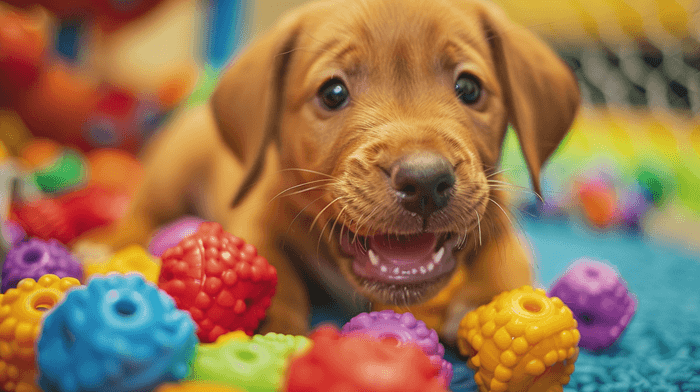
- Puppies (0-6 months): Look for soft, safe toys for their growing mouths. Soft rubber or fabric toys are ideal.
- Young Dogs (6 months-2 years): At this age, dogs are very active and curious. Interactive and durable toys are recommended.
- Adult Dogs (2-7 years): At this stage, toys for dogs should be tough and suitable for their energy level.
- Senior Dogs (7 years and up): Softer, easy-to-handle toys are more appropriate, considering their sensitive teeth and gums.
Step 2: Consider Your Dog’s Play Style
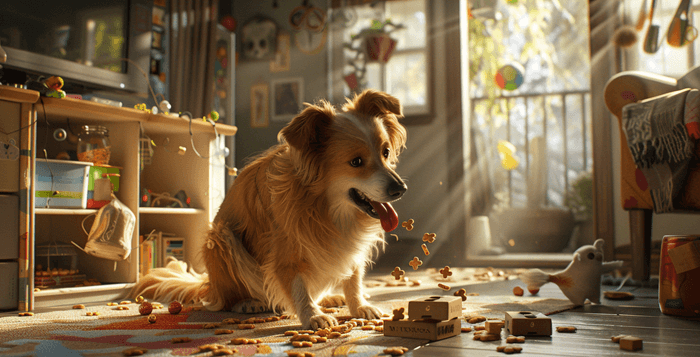
- Chewers: If your dog is an avid chewer, choose toys specifically designed to withstand wear and tear. Nylon or rubber toys are excellent options.
- Chasers: For dogs that love to run, balls and frisbees are perfect.
- Social Players: Toys that allow for play with other dogs or humans foster the development of social skills.
Step 3: Opt for Safe, Durable Materials
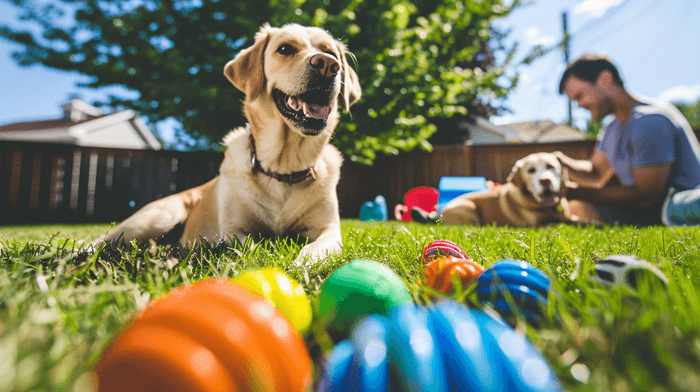
- Ensure that toys for dogs are made from non-toxic, durable materials. Rubber, nylon, and fabric toys are safe options, but check that they are strong enough for your dog’s bite.
Step 4: Introduce New Toys Gradually
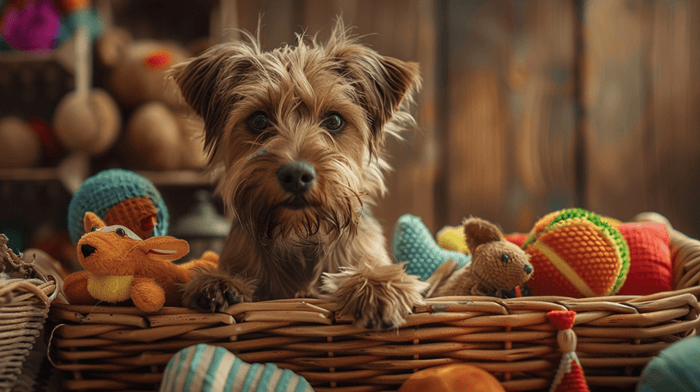
- When presenting a new toy, do so gradually. Allow your dog to sniff and explore it before starting to play. This can help reduce anxiety and increase their interest.
Step 5: Rotate Toys to Maintain Interest

- Dogs love novelty. Rotate toys so your dog doesn’t get bored. Store some toys for a while and then reintroduce those they haven’t seen in a while.
Common Mistakes or Challenges to Avoid
1. Ignoring Size and Age: One of the most common mistakes is failing to choose toys appropriate for your dog’s size and developmental stage. Inappropriate toys for dogs can cause injuries or fail to meet play needs.
2. Choosing Low-Quality Toys: Buying cheap toys can result in products that break easily or pose dangers. It’s better to invest in quality toys that are safe and durable.
3. Not Supervising Playtime: Many owners make the mistake of leaving their dogs to play unsupervised. It’s always advisable to monitor playtime, especially with new toys, to prevent possible accidents.
4. Forgetting Variety: Some owners stick to one type of toy. Providing variety is key to maintaining interest and exercise, so make sure to offer different types of toys.
5. Not Replacing Worn Toys: Worn or damaged toys can be hazardous. If a toy breaks or deteriorates, it’s important to replace it immediately to prevent injury to your dog.
Scientific Backing or Data
The importance of suitable toys for dogs is backed by various studies. A study conducted by Ohio State University found that dogs who regularly play with interactive toys have better mental health and are less likely to develop destructive behaviors. Dogs engaged in structured play activities show lower levels of aggression and anxiety compared to those without access to toys.
Another study published in the Journal of Veterinary Behavior concluded that chew toys help prevent dental issues in young dogs, supporting the significance of selecting appropriate toys at each life stage. This research emphasizes that chew toys are not only helpful for alleviating teething pain in puppies but also play a role in maintaining dental health in adult dogs.
The American Veterinary Medical Association (AVMA) also underscores the importance of mental and physical stimulation, recommending that owners provide toys and activities that promote regular exercise and social interaction.
Conclusion
Choosing the best toys for dogs according to their age and size is essential for ensuring their well-being and happiness. From developing social skills to promoting mental and physical health, toys play a crucial role in your pet’s life. With a wide variety of options available, it’s vital to select toys that cater to your dog’s individual needs and preferences.
Remember to consider their age, size, and play style when making your selection. Rotating toys and providing variety can keep your dog mentally stimulated and engaged. By following this guide, you’ll be well-positioned to provide your furry friend with the toys they need to enjoy an active and healthy life.
Additionally, don’t forget to supervise playtime and keep an eye on toy quality, replacing them when necessary. Ultimately, the key is to build a strong relationship with your dog through play, contributing to a long, happy life for both of you.
Would you like to learn more about caring for your dog? Don’t forget to visit our resource section and check out the digital book «Dog Trainer Bible,» where you’ll find valuable information on dog training and care. Your dog will thank you!
